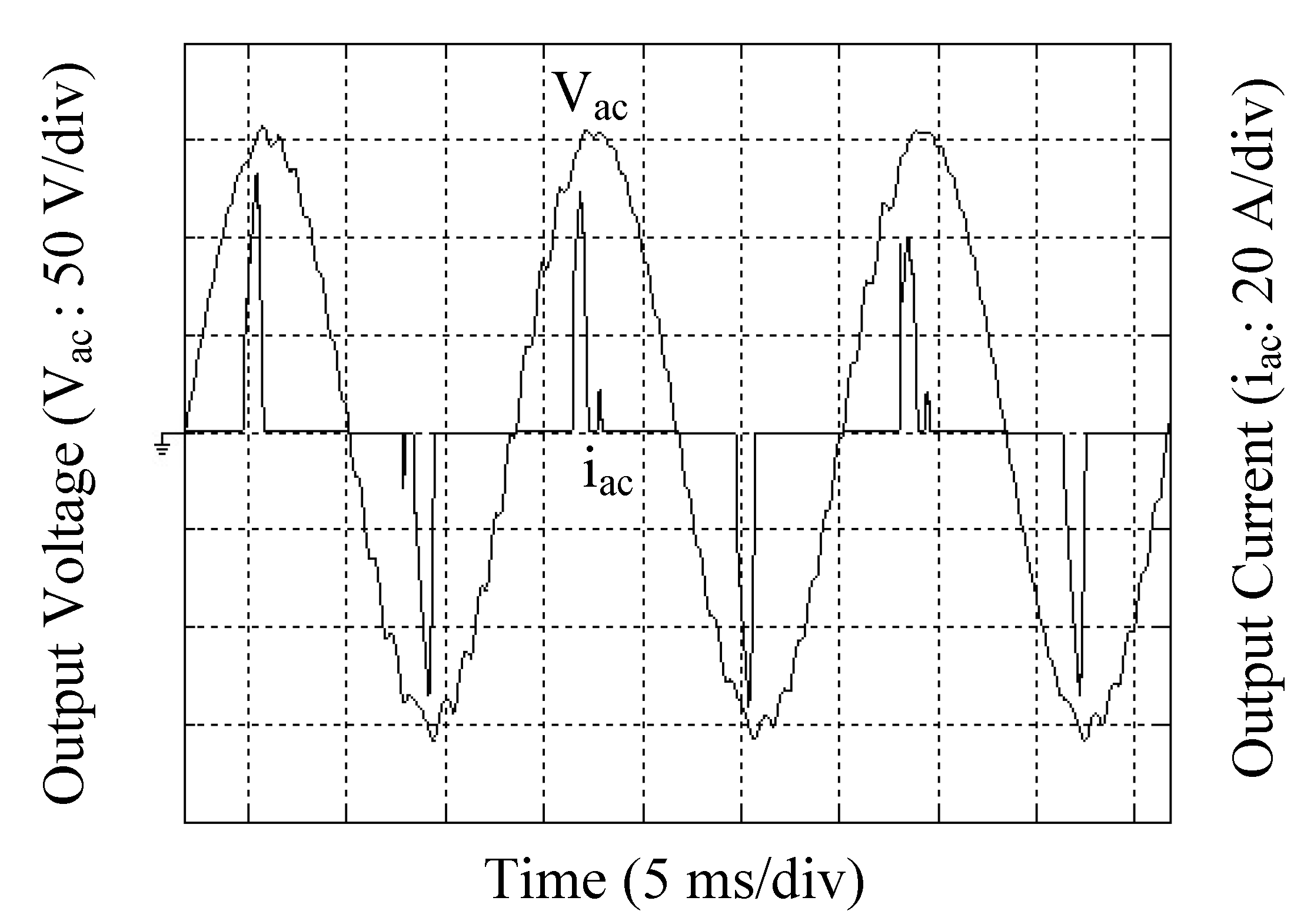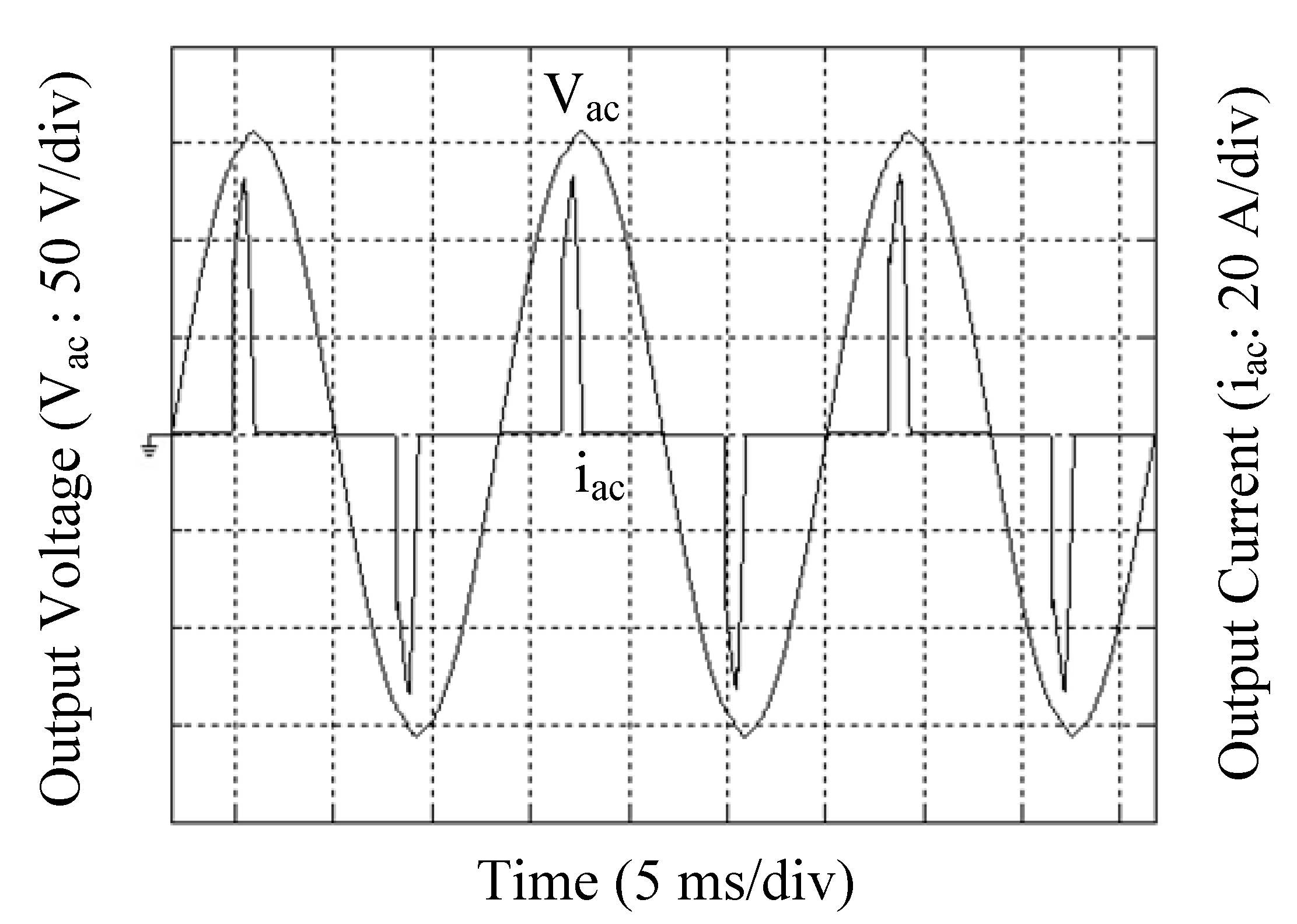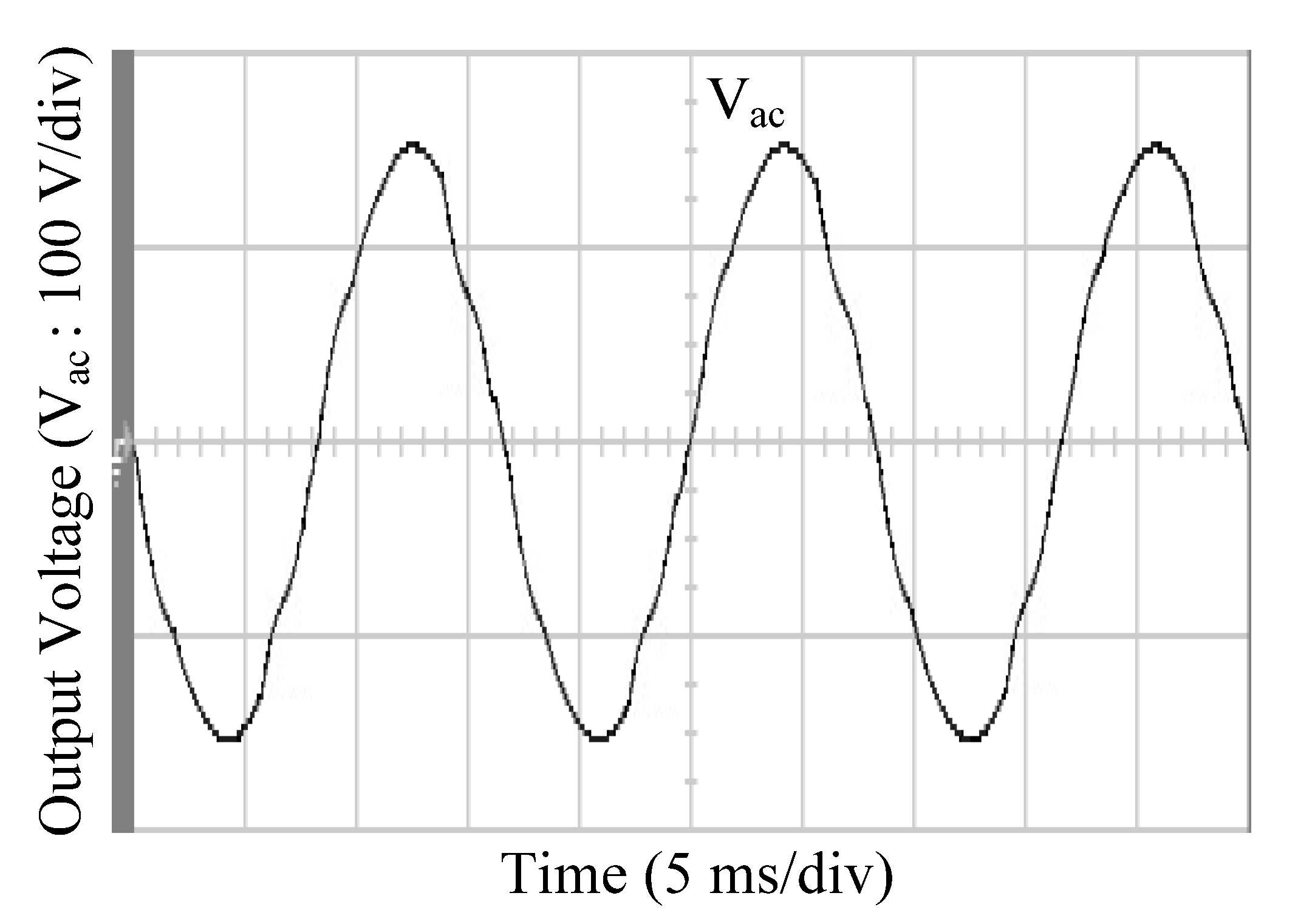A Novel Fixed-Time-Convergent Sliding Mode Technology Using Improved Quantum Particle Swarm Optimization for Renewable Energy Inverters
Abstract
:1. Introduction
2. Circuit Modeling of REI
3. Suggested Controller Design
3.1. Problem Statement
3.2. Derivation and Analysis of NFTCSMT Combined with Improved QPSO
4. Results and Discussion
5. Conclusions
Funding
Acknowledgments
Conflicts of Interest
References
- Chen, X.; Zhong, Y.; Zhang, L.; Howarter, J.A.; Baba, A.A.; Wang, C.; Sun, Z.; Zhang, M.; Olivetti, E.; Luo, A.; et al. Energy Technology 2020: Recycling, Carbon Dioxide Management, and Other Technologies; Springer International Publishing: New York, NY, USA, 2020. [Google Scholar]
- Belu, R. Renewable Energy Systems: Fundamentals and Source Characteristics; CRC Press: Boca Raton, FL, USA, 2019. [Google Scholar]
- Bizon, N. Optimization of the Fuel Cell Renewable Hybrid Power Systems; Springer International Publishing: New York, NY, USA, 2020. [Google Scholar]
- Jenkins, N.; Ekanayake, J. Renewable Energy Engineering; Cambridge University Press: Cambridge, UK, 2017. [Google Scholar]
- Bose, B.K. Power Electronics in Renewable Energy Systems and Smart Grid: Technology and Applications; John Wiley & Sons: Hoboken, NJ, USA, 2019. [Google Scholar]
- Suzuki, T.; Inagaki, S.; Susuki, Y.; Tran, A.T. Design and Analysis of Distributed Energy Management Systems; Springer International Publishing: New York, NY, USA, 2020. [Google Scholar]
- Liu, J.; Gao, Y.; Yin, Y.; Wang, J.; Luo, W.; Sun, G. Sliding Mode Control Methodology in the Applications of Industrial Power Systems; Springer International Publishing: New York, NY, USA, 2020. [Google Scholar]
- Ryvkin, S.E.; Lever, E.P. Sliding Mode Control for Synchronous Electric Drives; John Wiley & Sons: Hoboken, NJ, USA, 2019. [Google Scholar]
- Steinberger, M.; Horn, M.; Fridman, L. Variable-Structure Systems and Sliding-Mode Control; Springer International Publishing: New York, NY, USA, 2020. [Google Scholar]
- Argha, A.; Su, S.; Li, L.; Nguyen, H.T.; Celler, B.G. Advances in Discrete-Time Sliding Mode Control: Theory and Applications; John Wiley & Sons: Hoboken, NJ, USA, 2018. [Google Scholar]
- Feshara, H.F.; Ibrahim, A.M.; El-Amary, N.H.; Sharaf, S.M. Performance Evaluation of Variable Structure Controller Based on Sliding Mode Technique for a Grid-Connected Solar Network. IEEE Access 2019, 7, 84349–84359. [Google Scholar] [CrossRef]
- Alali, M.A.E.; Shtessel, Y.B.; Barbot, J.P. Grid-Connected Shunt Active LCL Control via Continuous Sliding Modes. IEEE/ASME Trans. Mechatron. 2019, 24, 729–740. [Google Scholar] [CrossRef]
- Shahab, M.A.; Mozafari, B.; Soleymani, S.; Dehkordi, N.M.; Shourkaei, H.M.; Guerrero, J.M. Distributed Consensus-Based Fault Tolerant Control of Islanded Microgrids. IEEE Trans. Smart Grid. 2020, 11, 37–47. [Google Scholar] [CrossRef]
- Ortega, R.; Carranza, O.; Rodríguez, J.J.; García, V.H.; Sosa, J.C.; Alvarado, J.M. Development and Application of a Reconfigurable Photovoltaic Inverter for Operation within a Microgrid. IEEE Access 2019, 7, 98755–98770. [Google Scholar] [CrossRef]
- Guo, B.; Su, M.; Sun, Y.; Wang, H.; Dan, H.B.; Tang, Z.T.; Cheng, B. A Robust Second-Order Sliding Mode Control for Single-Phase Photovoltaic Grid-Connected Voltage Source Inverter. IEEE Access 2019, 7, 53202–53212. [Google Scholar] [CrossRef]
- Cxakar, O.; Tanyýldýzý, A.K. Application of moving sliding mode control for a DC motor driven four-bar mechanism. Adv. Mech. Eng. 2018, 10, 1–13. [Google Scholar]
- Shao, S.Y.; Chen, M. Sliding-mode-disturbance-observer-based adaptive neural control of uncertain discrete-time systems. Sci. China Inf. Sci. 2019, 63, 1–3. [Google Scholar] [CrossRef] [Green Version]
- Yan, H.C.; Zhou, X.P.; Zhang, H.; Yang, F.W.; Wu, Z.G. A Novel Sliding Mode Estimation for Microgrid Control with Communication Time Delays. IEEE Trans. Smart Grid. 2019, 10, 1509–1520. [Google Scholar] [CrossRef]
- Wang, Z.; Li, S.H.; Li, Q. Discrete-Time Fast Terminal Sliding Mode Control Design for DC–DC Buck Converters with Mismatched Disturbances. IEEE Trans. Ind. Inf. 2020, 16, 1204–1213. [Google Scholar] [CrossRef]
- Jia, S.Y.; Shan, J.J. Finite-Time Trajectory Tracking Control of Space Manipulator Under Actuator Saturation. IEEE Trans. Ind. Electron. 2020, 67, 2086–2096. [Google Scholar] [CrossRef]
- Qiao, J.Z.; Li, Z.X.; Xu, J.W.; Yu, X. Composite Nonsingular Terminal Sliding Mode Attitude Controller for Spacecraft with Actuator Dynamics Under Matched and Mismatched Disturbances. IEEE Trans. Ind. Inf. 2020, 16, 1153–1162. [Google Scholar] [CrossRef]
- Rascón, R.; Rosas, D.I.; Rodríguez-Quiñonez, J.C. Robust Continuous Control for a Class of Mechanical Systems Based on Nonsingular Terminal Sliding Mode. IEEE Access 2020, 1–9. [Google Scholar] [CrossRef]
- Mishra, J.P.; Li, C.J.; Jalili, M.; Yu, X.H. Robust Second-Order Consensus Using a Fixed-Time Convergent Sliding Surface in Multiagent Systems. IEEE Trans. Cybern. 2020, 50, 846–855. [Google Scholar] [CrossRef]
- Fang, Y.M.; Zhu, Y.K.; Fei, J.T. Adaptive Intelligent Sliding Mode Control of a Photovoltaic Grid-Connected Inverter. Appl. Sci. 2018, 8, 1756. [Google Scholar] [CrossRef] [Green Version]
- Mobayen, S. Adaptive global sliding mode control of underactuated systems using a super-twisting scheme: An experimental study. J. Vib. Control. 2019, 25, 2215–2224. [Google Scholar] [CrossRef]
- Yang, T.; Gao, X.H. Adaptive Neural Sliding-Mode Controller for Alternative Control Strategies in Lower Limb Rehabilitation. IEEE Trans. Neural Syst. Rehabil. Eng. 2020, 28, 238–247. [Google Scholar] [CrossRef] [PubMed]
- An, Q.T.; Zhang, J.Q.; An, Q.; Liu, X.G.; Shamekov, A.; Bi, K.T. Frequency-Adaptive Complex-Coefficient Filter-Based Enhanced Sliding Mode Observer for Sensorless Control of Permanent Magnet Synchronous Motor Drives. IEEE Trans. Ind. Appl. 2020, 56, 335–343. [Google Scholar] [CrossRef]
- Liu, Y.J.; Chen, H. Adaptive Sliding Mode Control for Uncertain Active Suspension Systems with Prescribed Performance. IEEE Trans. Syst. ManCybern. Syst. 2020, 1–9. [Google Scholar] [CrossRef]
- Mao, Q.; Dou, L.Q.; Yang, Z.S.; Tian, B.L.; Zong, Q. Fuzzy Disturbance Observer-Based Adaptive Sliding Mode Control for Reusable Launch Vehicles with Aeroservoelastic Characteristic. IEEE Trans. Ind. Inform. 2020, 16, 1214–1223. [Google Scholar] [CrossRef]
- Ye, M.; Wang, H. A Robust Adaptive Chattering-Free Sliding Mode Control Strategy for Automotive Electronic Throttle System via Genetic Algorithm. IEEE Access 2020, 8, 68–80. [Google Scholar] [CrossRef]
- Jiang., B.P.; Karimi, H.R.; Kao, Y.G.; Gao, C.C. Adaptive Control of Nonlinear Semi-Markovian Jump T–S Fuzzy Systems with Immeasurable Premise Variables via Sliding Mode Observer. IEEE Trans. Cybern. 2020, 50, 810–820. [Google Scholar] [CrossRef] [PubMed] [Green Version]
- Cheng, L.; Zhu, Z.C.; Shen, G.; Wang, S.J.; Li, X.; Tang, Y. Real-Time Force Tracking Control of an Electro-Hydraulic System Using a Novel Robust Adaptive Sliding Mode Controller. IEEE Access 2020, 8, 13315–13328. [Google Scholar]
- Zhang, Z.N.; Niu, Y.G.; Song, J. Input-to-State Stabilization of Interval Type-2 Fuzzy Systems Subject to Cyberattacks: An Observer-Based Adaptive Sliding Mode Approach. IEEE Trans. Fuzzy Syst. 2020, 28, 190–203. [Google Scholar] [CrossRef]
- Zhang, Y.; Zeng, T.Y.; Li, G. Robust Excitation Force Estimation and Prediction for Wave Energy Converter M4 Based on Adaptive Sliding-Mode Observer. IEEE Trans. Ind. Inform. 2020, 16, 1163–1171. [Google Scholar] [CrossRef]
- Chen, Z.; Huang, F.G.; Chen, W.J.; Zhang, J.H.; Sun, W.C.; Chen, J.W.; Gu, J.; Zhu, S.Q. RBFNN-Based Adaptive Sliding Mode Control Design for Delayed Nonlinear Multilateral Telerobotic System with Cooperative Manipulation. IEEE Trans. Ind. Inform. 2020, 16, 1236–1247. [Google Scholar] [CrossRef]
- Haq, I.; Khan, Q.; Khan, I.; Akmeliawati, R.; Nisar, K.S.; Khan, I. Maximum power extraction strategy for variable speed wind turbine system via neuro-adaptive generalized global sliding mode controller. IEEE Access 2020, 1–13. [Google Scholar] [CrossRef]
- Li, R.G.; Wu, H.N. Adaptive synchronization control with optimization policy for fractional-order chaotic systems between 0 and 1 and its application in secret communication. Isa Trans. 2019, 92, 35–48. [Google Scholar] [CrossRef]
- Rehman, O.U.; Rehman, S.U.; Tu, S.S.; Khan, S.; Waqas, M.; Yang, S.Y. A Quantum Particle Swarm Optimization Method with Fitness Selection Methodology for Electromagnetic Inverse Problems. IEEE Access 2018, 6, 63155–63163. [Google Scholar] [CrossRef]
- Rehman, O.U.; Yang, S.Y.; Khan, S.; Rehman, S.U. A Quantum Particle Swarm Optimizer with Enhanced Strategy for Global Optimization of Electromagnetic Devices. IEEE Trans. Ind. Inform. 2019, 55, 1–4. [Google Scholar] [CrossRef]
- Mu, L. Dynamic scale quantum-inspired optimisation algorithm under harmonic oscillator potential well. Electron. Lett. 2019, 55, 1012–1015. [Google Scholar] [CrossRef]
- Chakraborty, R.; Sushil, R.; Garg, M.L. ICQPSO-based multilevel thresholding scheme applied on colour image segmentation. IET Signal Process. 2019, 13, 387–395. [Google Scholar] [CrossRef]
- Sharma, C.P.; Sapkota, K.; Tamang, D.B.; Newpaney, S.; Bhutia, J.N. Harmonic analysis and comparison between single phase three-level pulse width modulation (PWM) inverter and sinusoidal pulse width modulation (SPWM) inverter implementing analog circuits. In Proceedings of the 2019 Second International Conference on Advanced Computational and Communication Paradigms (ICACCP), Gangtok, India, 25–28 February 2019. [Google Scholar]
- Zhang, B.; Qiu, D. m-Mode SVPWM Technique for Power Converters; Springer: Singapore, 2019. [Google Scholar]
- Zhang, X.N.; Foo, G.H.B.; Jiao, T.; Ngo, T.; Lee, C.H.T. A Simplified Deadbeat Based Predictive Torque Control for Three-Level Simplified Neutral Point Clamped Inverter Fed IPMSM Drives Using SVM. IEEE Trans. Energy Convers. 2019, 34, 1906–1916. [Google Scholar] [CrossRef]
- Fuentes, G.A.R.; Ruget, R.I.; Castello, R.C. Robust repetitive control of power inverters for standalone operation in DG systems. IEEE Trans. Energy Convers. 2019. [CrossRef]
- Yang, T.G.; Cai, Z.H.; Xun, Q. Adaptive Backstepping-Based H∞ Robust Controller for Photovoltaic Grid- Connected Inverter. IEEE Access 2020, 8, 17263–17272. [Google Scholar] [CrossRef]
- Ashtiani, N.A.; Azizi, S.M.; Khajehoddin, S.A. Robust Control Design for High-Power Density PV Converters in Weak Grids. IEEE Trans. Control Syst. Technol. 2019, 27, 2361–2373. [Google Scholar] [CrossRef]
- Yang, L.S.; Lin, C.C.; Chang, E.C. A Three-Phase AC-DC High Step-up Converter for Microscale Wind-power Generation Systems. J. Power Electron. 2016, 16, 1861–1868. [Google Scholar] [CrossRef] [Green Version]
- Liu, Y.C.; Chang, E.C.; Lee, Y.L.; Lin, Y.Z. Detection of Ground Insulation Faults in Ungrounded DC Power Supply Systems by Using a DC Current Injection Method. Energy Procedia. 2019, 156, 349–355. [Google Scholar] [CrossRef]
- Cheng, C.A.; Chang, C.H.; Cheng, H.L.; Chang, E.C.; Chung, T.Y.; Chang, M.T. A Single-Stage LED Streetlight Driver with Soft-Switching and Interleaved PFC Features. Electronics 2019, 8, 911. [Google Scholar] [CrossRef] [Green Version]











| Simulation Results | ||
|---|---|---|
| CustomaryTSMVSC | Step-loading variations (Voltage dip) | 49 Vrms |
| Nonlinear loading (%THD) | 26.82% | |
| Suggested controller | Step-loading variations (Voltage dip) | 4 Vrms |
| Nonlinear loading (%THD) | 0.07% | |
| Experimental Results | ||
|---|---|---|
| CustomaryTSMVSC | Step-loading variations (Voltage dip) | 48 Vrms |
| Inductor-capacitor alterations (%THD) | 16.63% | |
| Suggested controller | Step-loading variations (Voltage dip) | 7 Vrms |
| Inductor-capacitor alterations (%THD) | 0.03% | |
© 2020 by the author. Licensee MDPI, Basel, Switzerland. This article is an open access article distributed under the terms and conditions of the Creative Commons Attribution (CC BY) license (http://creativecommons.org/licenses/by/4.0/).
Share and Cite
Chang, E.-C. A Novel Fixed-Time-Convergent Sliding Mode Technology Using Improved Quantum Particle Swarm Optimization for Renewable Energy Inverters. Sustainability 2020, 12, 1102. https://doi.org/10.3390/su12031102
Chang E-C. A Novel Fixed-Time-Convergent Sliding Mode Technology Using Improved Quantum Particle Swarm Optimization for Renewable Energy Inverters. Sustainability. 2020; 12(3):1102. https://doi.org/10.3390/su12031102
Chicago/Turabian StyleChang, En-Chih. 2020. "A Novel Fixed-Time-Convergent Sliding Mode Technology Using Improved Quantum Particle Swarm Optimization for Renewable Energy Inverters" Sustainability 12, no. 3: 1102. https://doi.org/10.3390/su12031102




